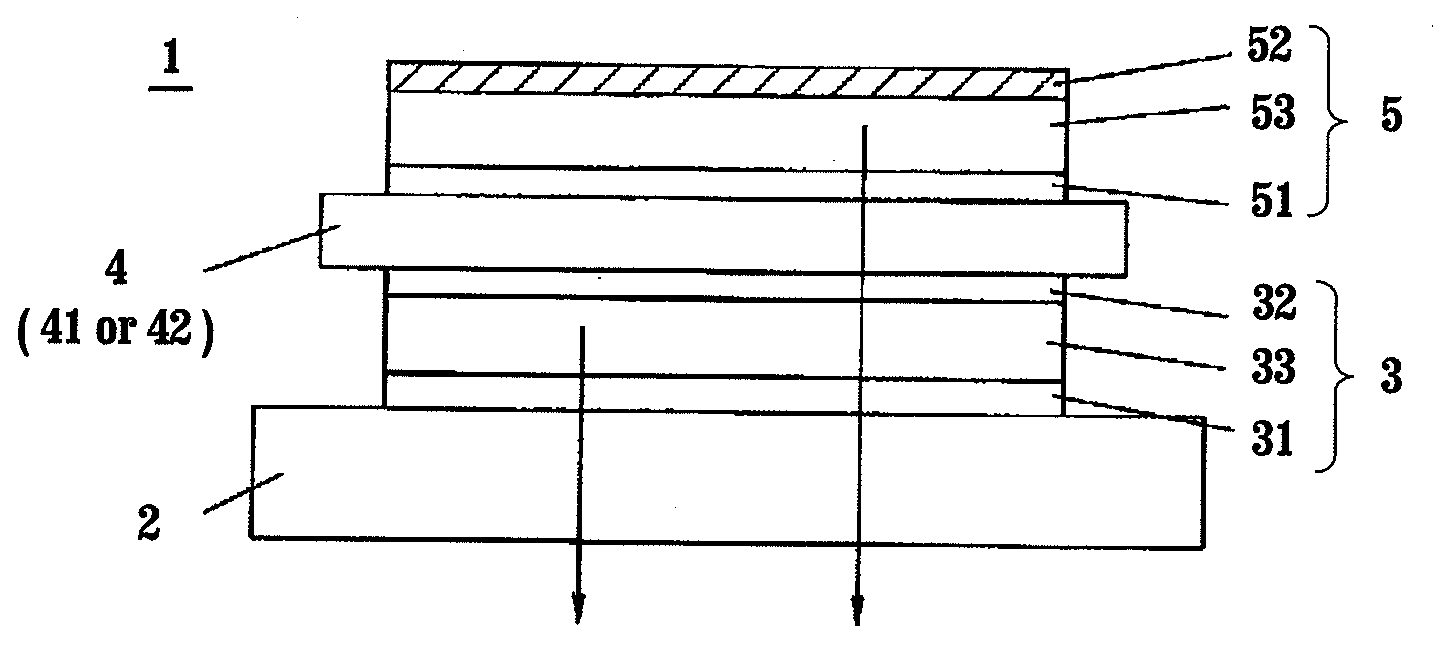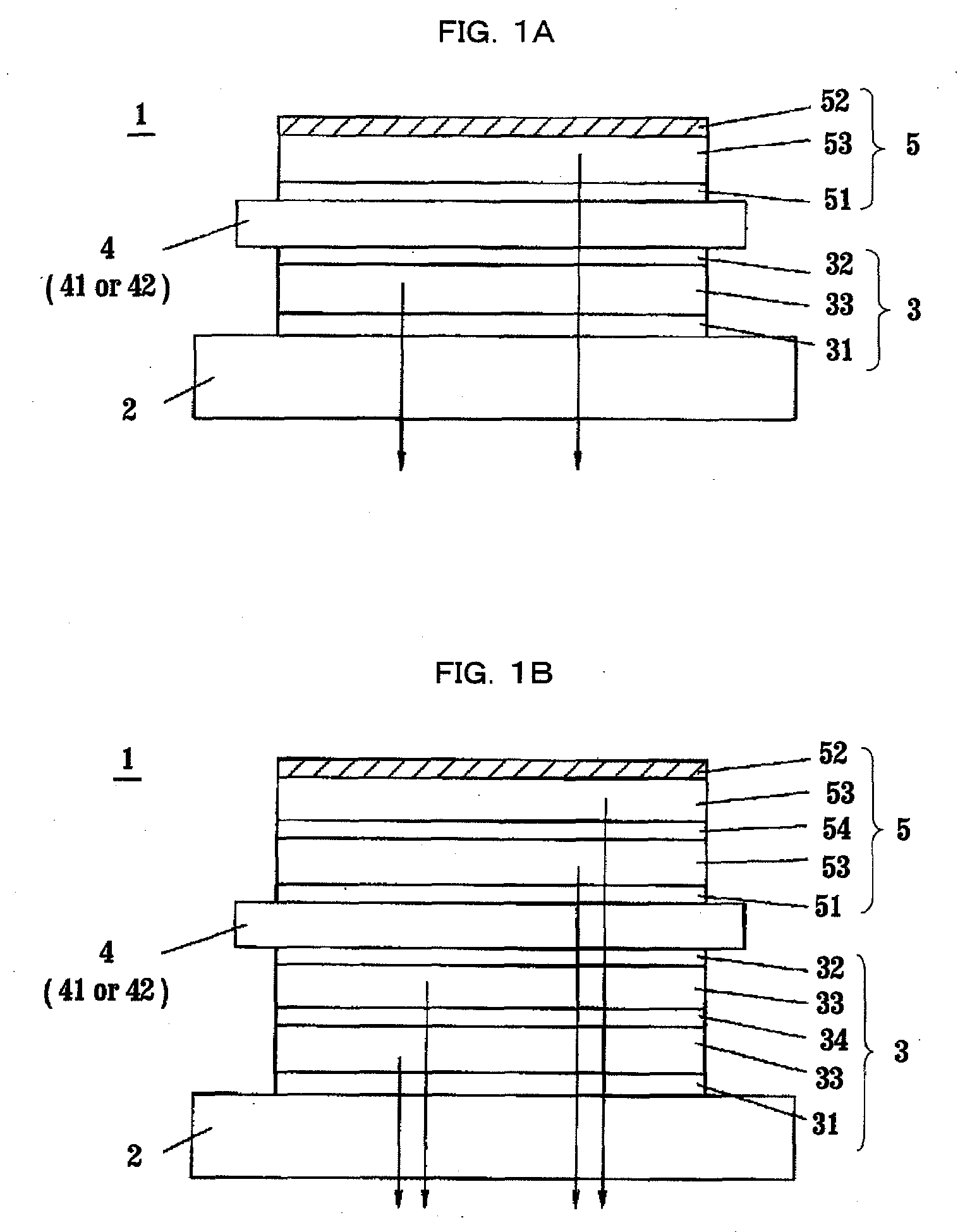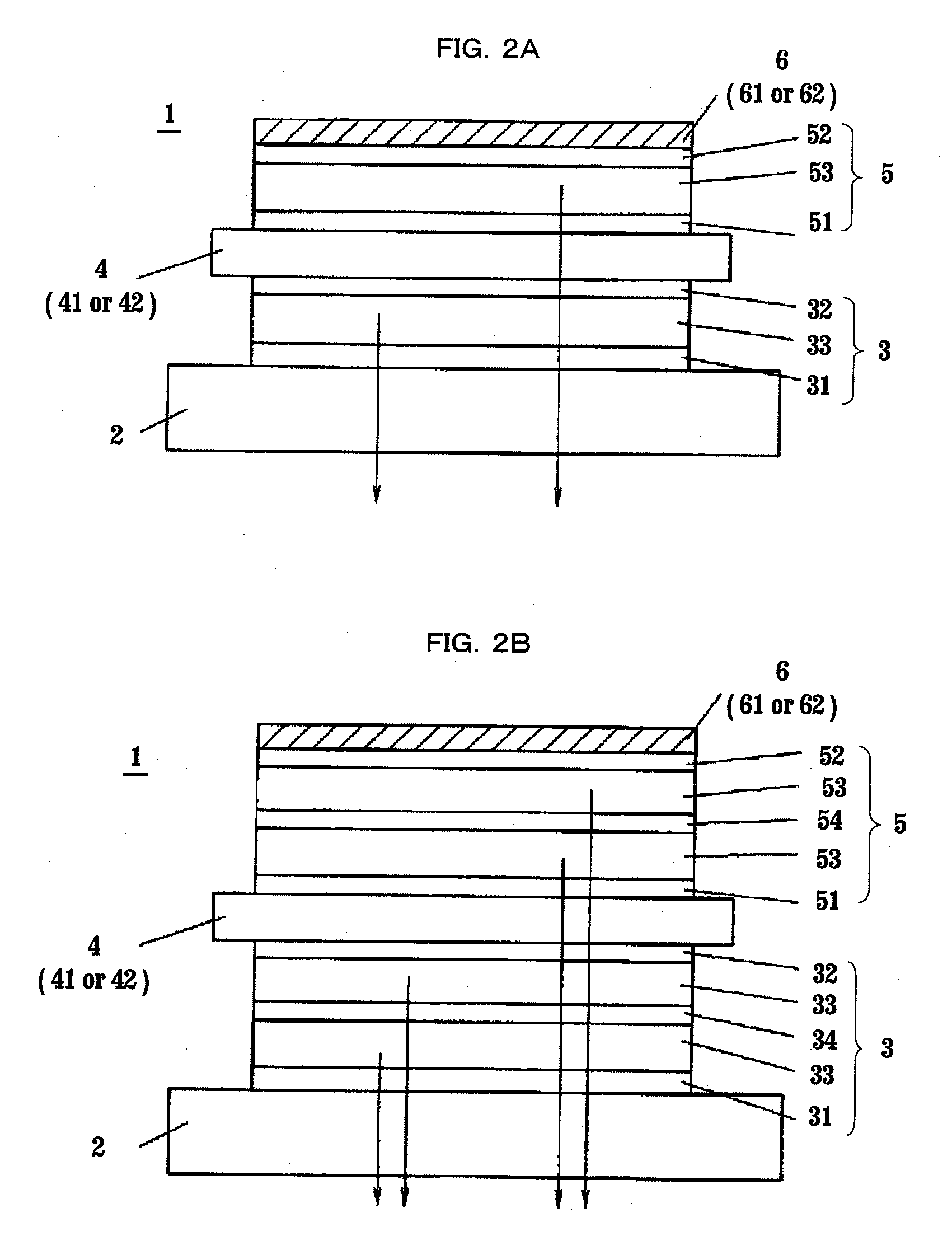Organic light emitting element and method of manufacturing the same
- Summary
- Abstract
- Description
- Claims
- Application Information
AI Technical Summary
Benefits of technology
Problems solved by technology
Method used
Image
Examples
Embodiment Construction
[0037]Hereinafter, an organic light emitting element according to a first embodiment of the present invention will be described with reference to FIG. 1A. An organic light emitting element 1 (organic EL light emitting element) comprises a first light emitting unit 3, a light-transmitting insulating layer 4, and a second light emitting unit 5 which are stacked in this order on a substrate 2. The first light emitting unit 3 is formed by stacking a first light emitting layer 33 between two, first and second, electrodes 31, 32, in which one of the first and second electrodes 31, 32 serves as an anode, and the other as a cathode. Further, the second light emitting unit 5 is formed by stacking a second light emitting layer 53 between two, third and fourth, electrodes 51, 52, in which one of the third and fourth electrodes 51, 52 serves as an anode, and the other as a cathode, similarly as in the electrodes 31, 32. Here, among the first to fourth electrodes 31, 32, 51, 52, either the first...
PUM
 Login to View More
Login to View More Abstract
Description
Claims
Application Information
 Login to View More
Login to View More - R&D
- Intellectual Property
- Life Sciences
- Materials
- Tech Scout
- Unparalleled Data Quality
- Higher Quality Content
- 60% Fewer Hallucinations
Browse by: Latest US Patents, China's latest patents, Technical Efficacy Thesaurus, Application Domain, Technology Topic, Popular Technical Reports.
© 2025 PatSnap. All rights reserved.Legal|Privacy policy|Modern Slavery Act Transparency Statement|Sitemap|About US| Contact US: help@patsnap.com



